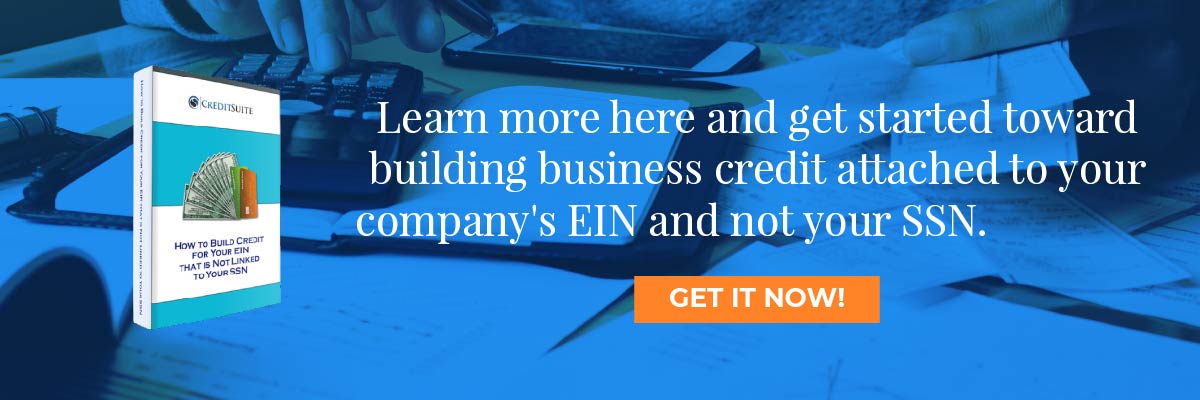- Connect With Us!
- (877) 600-2487
- info@creditsuite.com
How to Set Up a New Business in Ohio
Published By Janet Gershen-Siegel at May 27th, 2019
Starting a Business in Ohio
A new business in Ohio is not out of your reach. So have you been wondering: how do I start a business in Ohio? And more importantly, can I do so no matter what the economic conditions are? Can I start a new business in Ohio during a recession?
New Business in Ohio: Pros and Cons
Ohio is in the middle set of ten states to start a new business in. This is for the whole country, per a 2016 article in Business Insider. Economies in the Rust Belt are in decline.
But Ohio’s economic environment seems to provide a great market for new businesses. Ohio was second for opportunity share of new business owners. There is also an affordable cost of living.
But there are very few startup businesses per existing business. Also, the business tax climate is not too conducive to business interests.
Changes – for the Better, or for the Worse?
In 2018, Forbes gave Ohio a score of 20. But Fit Small Business (also in 2018) put it at 30. Keep in mind, these three sites’ methodologies all differ. Still, these numbers are fairly consistent.
Forbes praises Ohio for its second-best quality of life and its good regulatory environment and economic climate. Business costs are also good. But growth prospects and labor supply are both in the bottom ten – not a place where any state should want to be.
Fit Small Business recognizes Ohio for its eighth-best access to capital and its good startup activity, costs of starting a business, and cost of living. But the state falters with a quality of life below average (note: there are some subjective considerations). And it’s below average for its labor market, a measurement of the desirability of an area and the number of people with bachelor’s degrees. Hence it’ll be hard to find people to work for a company – and hard to find educated people to boot.
A sole proprietor not wishing to hire will not have to worry about this. But they should have some concerns about Ohio’s taxes – a dismal 45th on the list.
New Business in Ohio: Initiatives
A significant Ohio business resource is the state’s Ohio Job Creation Tax Credit. It provides income and franchise tax credits to businesses which locate or expand operations in the state.
Eligible companies must create at least 25 jobs. These jobs must pay 150% of minimum wage. There are lower requirements for job creation numbers if the created jobs are particularly well paid.
Technology Investment Tax Credit
Ohio also offers taxpayers a Technology Investment Tax Credit. It is for residents who make investments in small companies involved in research and development activities.
This tax credit can equal as much as 25 – 30% of a qualified investment. Investments must be in companies based in Ohio which show a net value of under $1 million. This makes sure these tax credits support small businesses.
1st Stop Business Connection Program
To help overcome potential problems with registering a new business, Ohio created the 1st Stop Business Connection program.
It gives small businesses a tailored information kit to guide them through regulatory and licensing processes. Participating businesses can also access a centralized, online process to get necessary forms and applications.
Small Business Advocate Office
The state’s Small Business Advocate Office works with business owners to resolve potentially difficult interactions with state agencies. This Ohio business resource works with small companies to overcome challenges that might otherwise keep them from opening their businesses in the state.
Start a New Business in Ohio – Ohio Top Industries
Some of the bigger employers in Ohio are in the areas of health care and social assistance. Smart business owners can find new opportunities. Work with bigger industries in the state. Offer goods or services. These include trucking for any industry. Another possible is also the development and distribution of safety equipment.
Here is how to start a new business in Ohio.
Start a New Business in Ohio – Ohio New Business Secretary of State Requirements
Register a Business Name
There is a guide to name availability on the Ohio Secretary of State’s website.
Business Permits and Licenses
There is a list of business and professional licenses on the Ohio government website. Also, get a Vendor License with the Ohio Department of Taxation.
Local Permits and Licenses
A complete list of county clerks is through the Ohio Clerk of Courts Association.
Start a New Business in Ohio – Business Registration
Be sure to check the Ohio Secretary of State’s Office, where you can find forms you need. You can also file them online.
Tax Registration
All necessary forms are on the Ohio Department of Taxation website. If you need some help, the department offers what it refers to as a “Self Help eLibrary.”
Start a New Business in Ohio – Virtual Offices
Alliance offers Ohio virtual business office space in Beavercreek, Cincinnati, Cleveland, and Columbus.
Go to Regus for Akron, Dayton, and Youngstown. That office is in East Monroeville, Pennsylvania. Go to DaVinci for Beachwood, Canton, and Dublin. Also go to DaVinci for Independence, Toledo, and Westlake.
But for other parts of the state, try local business owners. Or ask computer user groups for help in this area.
More options may be virtual business office space in nearby states. These are Indiana, Kentucky, Michigan, Pennsylvania, and also West Virginia.
Start a New Business in Ohio – Establish Business Credit
Business credit is credit in a business’s name. It doesn’t link to a business owner’s consumer credit, not even if the owner is a sole proprietor and the only employee of the business.
As a result, an entrepreneur’s business and individual credit scores can be very different.
The Advantages
Because small business credit is separate from individual, it helps to protect an entrepreneur’s personal assets, in case of court action or business bankruptcy.
Also, with two separate credit scores, a business owner can get two different cards from the same merchant. This effectively doubles purchasing power.
Another benefit is that even startup ventures can do this. Going to a bank for a business loan can be a formula for frustration. But building business credit, when done the right way, is a plan for success.
Personal credit scores are dependent on payments but also various other elements like credit utilization percentages.
But for business credit, the scores truly only hinge on if a business pays its invoices timely.
Learn more here and get started toward building business credit attached to your company’s EIN and not your SSN.
The Process
Establishing company credit is a process, and it does not happen automatically. A company will need to actively work to develop business credit.
However, it can be done easily and quickly, and it is much speedier than establishing personal credit scores.
Merchants are a big component of this process.
Undertaking the steps out of order will cause repetitive denials. Nobody can start at the top with business credit. For instance, you can’t start with retail or cash credit from your bank. If you do, you’ll get a rejection 100% of the time.
Start a New Business in Ohio – Small Business Fundability
A business must be fundable to lenders and merchants.
That’s why, a company will need a professional-looking website and email address. And it needs to have website hosting bought from a company like GoDaddy.
In addition, business telephone and fax numbers ought to have a listing on ListYourself.net.
In addition, the business telephone number should be toll-free (800 exchange or similar).
A company will also need a bank account devoted strictly to it, and it needs to have all of the licenses necessary for operation.
Learn more here and get started toward building business credit attached to your company’s EIN and not your SSN.
Dealing with the IRS
Visit the IRS web site and get an EIN for the small business. They’re free. Select a business entity like corporation, LLC, etc.
A small business can begin as a sole proprietor. But they will probably want to change to a kind of corporation or an LLC.
This is in order to reduce risk. And it will make best use of tax benefits.
A business entity will matter when it concerns tax obligations and liability in case of litigation. A sole proprietorship means the entrepreneur is it when it comes to liability and tax obligations. No one else is responsible.
Sole Proprietors Take Note
If you run a business as a sole proprietor, then at least be sure to file for a DBA. This is ‘doing business as’ status.
If you do not, then your personal name is the same as the company name. Because of this, you can find yourself being directly liable for all business financial obligations.
Also, per the Internal Revenue Service, with this structure there is a 1 in 7 chance of an IRS audit. There is a 1 in 50 probability for corporations! Steer clear of confusion and dramatically reduce the chances of an Internal Revenue Service audit at the same time.
Starting the Business Credit Reporting Process
Start at the D&B website and get a cost-free D-U-N-S number. A D-U-N-S number is how D&B gets a small business in their system, to generate a PAYDEX score. If there is no D-U-N-S number, then there is no record and no PAYDEX score.
Once in D&B’s system, search Equifax and Experian’s web sites for the small business. You can do this at fastcs.wpengine.com/reports. If there is a record with them, check it for correctness and completeness. If there are no records with them, go to the next step in the process.
By doing so, Experian and Equifax will have something to report on.
Vendor Credit Tier
First you should establish trade lines that report. This is also referred to as the vendor credit tier. Then you’ll have an established credit profile, and you’ll get a business credit score.
And with an established business credit profile and score you can begin to get credit in the retail and cash credit tiers.
These types of accounts often tend to be for the things bought all the time, like marketing materials, shipping boxes, outdoor work wear, ink and toner, and office furniture.
But to start with, what is trade credit? These trade lines are credit issuers who will give you preliminary credit when you have none now. Terms are generally Net 30, versus revolving.
Hence, if you get an approval for $1,000 in vendor credit and use all of it, you must pay that money back in a set term, such as within 30 days on a Net 30 account.
Details
Net 30 accounts need to be paid in full within 30 days. 60 accounts have to be paid completely within 60 days. Compared to with revolving accounts, you have a set time when you have to pay back what you borrowed or the credit you used.
To begin your business credit profile the proper way, you should get approval for vendor accounts that report to the business credit reporting agencies. When that’s done, you can then use the credit.
Then pay back what you used, and the account is on report to Dun & Bradstreet, Experian, or Equifax.
Vendor Credit Tier – It Makes Sense
Not every vendor can help in the same way true starter credit can. These are merchants that will grant an approval with minimal effort. You also want them to be reporting to one or more of the big three CRAs: Dun & Bradstreet, Equifax, and Experian.
You want 5 to 8 of these to move onto the next step, which is the retail credit tier. But you may need to apply more than once to these vendors. So, this is to verify you are reliable and will pay timely.
Retail Credit Tier
Once there are 5 to 8 or more vendor trade accounts reporting to at least one of the CRAs, then progress to the retail credit tier. These are businesses such as Office Depot and Staples.
Only use your Social Security Number and date of birth on these applications for verification purposes. For credit checks and guarantees, use the small business’s EIN on these credit applications.
One such example is Lowe’s. They report to D&B, Equifax and Business Experian. They need to see a D-U-N-S and a PAYDEX score of 78 or more.
Fleet Credit Tier
Are there 8 to 10 accounts reporting? Then move to the fleet credit tier. These are businesses such as BP and Conoco. Use this credit to purchase fuel, and to fix, and take care of vehicles. Just use your SSN and date of birth on these applications for verification purposes. For credit checks and guarantees, make sure to apply using the business’s EIN.
One such example is Shell. They report to D&B and Business Experian. They need to see a PAYDEX Score of 78 or better and a 411 business phone listing.
Shell may claim they want a particular amount of time in business or revenue. But if you already have adequate vendor accounts, that won’t be necessary. And you can still get approval.
Learn more here and get started toward building business credit attached to your company’s EIN and not your SSN.
Cash Credit Tier
Have you been sensibly managing the credit you’ve up to this point? Then move to the cash credit tier. These are companies such as Visa and MasterCard. Only use your Social Security Number and date of birth on these applications for verification purposes. For credit checks and guarantees, use your EIN instead.
One such example is the Fuelman MasterCard. They report to D&B and Equifax Business. They need to see a PAYDEX Score of 78 or higher. And they also want you to have 10 trade lines reporting on your D&B report.
Plus, they want to see a $10,000 high credit limit reporting on your D&B report (other account reporting).
In addition, they want you to have an established company.
These are businesses such as Walmart and Dell, and also Home Depot, BP, and Racetrac. These are normally MasterCard credit cards. If you have 14 trade accounts reporting, then these are feasible.
Start a New Business in Ohio – Monitor Your Business Credit
Know what is happening with your credit. Make certain it is being reported and attend to any inaccuracies as soon as possible. Get in the practice of taking a look at credit reports and digging into the specifics, and not just the scores.
We can help you monitor business credit at Experian and D&B for only $24/month. See: fastcs.wpengine.com/monitoring.
Update Your Record
Update the relevant information if there are errors or the relevant information is incomplete.
Fix Your Business Credit
So, what’s all this monitoring for? It’s to challenge any errors in your records. Mistakes in your credit report(s) can be taken care of. But the CRAs usually want you to dispute in a particular way.
Disputes
Disputing credit report inaccuracies generally means you send a paper letter with duplicates of any proofs of payment with it. These are documents like receipts and cancelled checks. Never send the original copies. Always mail copies and retain the original copies.
Fixing credit report errors also means you specifically spell out any charges you dispute. Make your dispute letter as clear as possible. Be specific about the concerns with your report. Use certified mail so that you will have proof that you sent in your dispute.
A Word about Business Credit Building
Always use credit sensibly! Never borrow more than what you can pay back. Keep track of balances and deadlines for repayments. Paying punctually and fully will do more to raise business credit scores than just about anything else.
Growing company credit pays. Excellent business credit scores help a small business get loans. Your lender knows the business can pay its financial obligations. They know the business is for real.
The company’s EIN links to high scores and credit issuers won’t feel the need to request a personal guarantee.
Business credit is an asset which can help your business for years to come.
Learn more here and get started toward opening a new business in Ohio.
Want to start a new business someplace else in America? Then check out our handy guide to starting a business in any state in the country.
Ohio’s Response to COVID-19
Here’s what Ohio is doing about COVID-19. On March 9, Governor Mike DeWine declared a state of emergency. The Ohio Department of Health prohibits mass gatherings of 100 or more persons.
Ohio is eligible for emergency disaster loans from the SBA. It is estimated that about 1,400 small businesses in Ohio will qualify for funding.

 " class="attachment-blog-single size-blog-single wp-post-image" alt="Get Business Credit Cards for New Businesses Credit Suite-Business Line of Credit Decoded" title="Get Business Credit Cards for New Businesses">>
" class="attachment-blog-single size-blog-single wp-post-image" alt="Get Business Credit Cards for New Businesses Credit Suite-Business Line of Credit Decoded" title="Get Business Credit Cards for New Businesses">>
